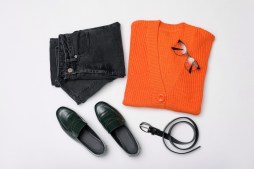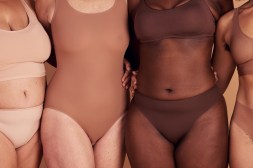Unlocking the Secrets to Perfectly Coordinated Jewelry and Outfit Combinations

When it comes to fashion, every little detail counts. Coordinating your jewelry with your outfit can make a big difference in elevating your overall look. Whether you’re heading to a formal event or simply want to add a touch of style to your everyday attire, understanding how to match your jewelry with your outfit is essential. In this article, we will unlock the secrets to perfectly coordinated jewelry and outfit combinations, helping you achieve a polished and put-together look every time.
Understanding Your Personal Style
Before delving into the art of coordinating jewelry with your outfit, it’s important to understand and define your personal style. Your personal style is an expression of who you are and should be reflected in everything you wear, including your choice of jewelry. Take some time to analyze your wardrobe and identify patterns in terms of colors, textures, and silhouettes that you gravitate towards. This will serve as a foundation for creating harmonious combinations between your clothes and accessories.
Complementing Colors
One of the key elements when coordinating jewelry with an outfit is color harmony. By selecting pieces that complement the colors of your clothing, you can create a cohesive and visually pleasing ensemble. To achieve this, consider using the color wheel as a guide.
If you’re wearing warm-toned clothing such as earthy browns or vibrant oranges, opt for gold or copper-toned jewelry to enhance the warmth in your look. On the other hand, if cool tones dominate your outfit like shades of blue or gray, silver or white gold pieces will provide an elegant contrast.
Another approach is to use complementary colors—those opposite each other on the color wheel—to create eye-catching combinations. For example, pairing a deep green dress with red accessories can create a striking visual impact.
Balancing Statement Pieces
Statement jewelry can add flair and personality to any outfit, but it’s important to strike a balance between your statement piece and the rest of your ensemble. If you’re wearing a bold necklace, opt for smaller earrings and avoid other accessories that may compete for attention. On the other hand, if you choose to wear large statement earrings, keep the necklace simple or skip it altogether.
When it comes to bracelets and rings, consider the overall proportions of your outfit. If you’re wearing long sleeves or a heavily embellished top, it might be best to skip bracelets altogether or opt for delicate ones that won’t interfere with the details of your clothing. Similarly, if your outfit features intricate patterns or textures, choose simple rings that won’t overpower the visual appeal.
Matching Styles
Coordinating jewelry with your outfit goes beyond just colors and sizes—it’s also about matching styles. The style of your jewelry should align with the overall aesthetic of your clothing to create a cohesive look.
For example, if you’re going for a bohemian-inspired look with flowing dresses and natural fabrics, opt for organic-shaped jewelry such as feather earrings or beaded necklaces. If you prefer a more minimalist style with clean lines and monochromatic outfits, sleek and understated pieces like geometric earrings or dainty chain necklaces will complement your ensemble perfectly.
Remember that less is often more when it comes to coordinating styles. Aim for a cohesive look rather than overwhelming yourself with too many different elements.
In conclusion, coordinating jewelry with your outfit is an art form that can elevate any ensemble from ordinary to extraordinary. Understanding your personal style, complementing colors effectively, balancing statement pieces, and matching styles are all key factors in achieving perfectly coordinated combinations. By following these secrets and experimenting with different combinations, you’ll unlock endless possibilities for creating stylish looks that truly reflect who you are.
This text was generated using a large language model, and select text has been reviewed and moderated for purposes such as readability.





